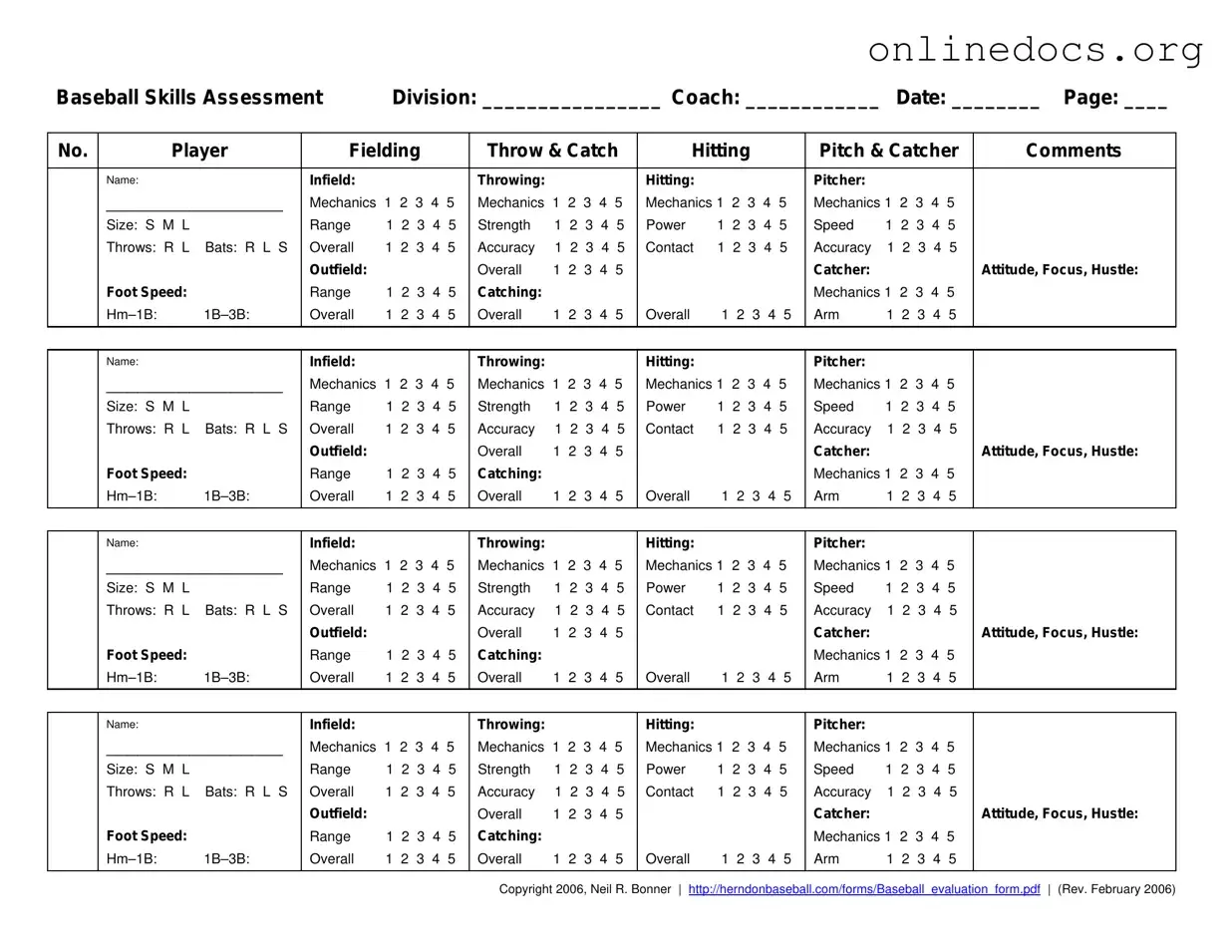The Baseball Skills Assessment form shares similarities with the Player Evaluation Form commonly used in various sports. Both documents aim to assess a player's skills and abilities systematically. They typically include sections for scoring different competencies, such as offense and defense, and often employ a numerical scale to quantify performance. This structured approach allows coaches and evaluators to make informed decisions about team selection, ensuring that players are evaluated fairly based on their demonstrated abilities.
Another document that mirrors the Baseball Skills Assessment form is the Sports Tryout Evaluation Sheet. Like the baseball form, this sheet is designed to provide a clear framework for assessing athletes during tryouts. It usually contains categories for various skills relevant to the sport, such as speed, agility, and technical skills. Coaches can use this information to compare players and make selections based on their overall performance, enhancing the transparency of the selection process.
The Coaching Feedback Form is also akin to the Baseball Skills Assessment form. This document focuses on providing constructive feedback to players after evaluations. It often includes sections for strengths and areas for improvement, much like the comments section in the baseball assessment. Both forms serve to guide players in their development by highlighting specific skills that need attention, fostering a growth-oriented mindset among athletes.
The Fitness Assessment Form is another comparable document. While the focus is more on physical capabilities, it shares the same evaluative spirit as the Baseball Skills Assessment. This form typically measures attributes such as strength, endurance, and flexibility, using a scoring system to quantify results. Coaches can use the data from both forms to tailor training programs that address the unique needs of each athlete, ensuring they are prepared for competitive play.
To ensure your wishes are respected after your passing, utilizing a fundamental legal document like a crucial Last Will and Testament template can be invaluable. This document serves as a guide for distributing your assets and caring for any dependents, which can ease the burden on your loved ones during a difficult time.
Lastly, the Skill Development Plan resembles the Baseball Skills Assessment form in its goal of improving player performance. This plan outlines specific skills that players should focus on, along with measurable objectives and timelines for achieving them. Like the baseball assessment, it emphasizes a structured approach to skill enhancement, enabling players to track their progress and stay motivated as they work towards their athletic goals.
